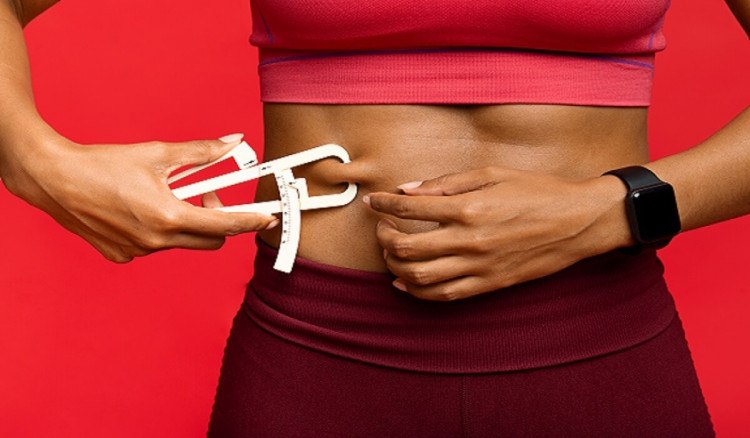
Diabetes Weight Loss Tips and Strategies
Many people with diabetes, especially type 2 diabetes, would like to lose weight. But how much? You may decide that you want to lose just enough weight to improve your insulin sensitivity. Many people with type 2 diabetes find that losing just 2kg to 4kg can improve blood glucose control, blood pressure and cholesterol levels. Some people with type 2 diabetes even find that by losing all of their excess weight, they are able to stop taking their medications.
DIABETES WEIGHT LOSS TIPS
What You Should Do For Diabetes Weight Loss
The key to losing weight is burning up more calories than you take in. follow your meal plan and exercise schedule. Once you have set your goals, the biggest problem is getting started. Make sure your goals are realistic. It may seem like too much to think you have to lose 20kg and start a marathon training program. And it probably is. Instead, take small steps.
For example, for the first week, try to eliminate 250 calories from your total intake each day. That could be as simple as giving up that slice of apple pie at lunch and taking a 1-kilometer stroll every evening. Once you get used to it, you can add more exercise or further decrease your calorie intake to lose more weight. Or you can just keep on at the rate you’re going. Even with this modest change, you could lose 0.2kg or 0.4kg a week. It may not seem like much, but over the long haul, those kilograms can add up.
If you find you’re not making much progress with your meal and exercise plan, try some of the following suggestions:
- For a solid week, write down everything you eat. Don’t leave out anything. You want to get an honest assessment of what you’re actually eating. Make sure you describe each food and the serving size. Use a calorie chart to figure out how many calories and grams of fat you are currently eating each day
- During the same week, write down all the physical activities you do. Even walking up and down the stairs or working in your garden or cleaning your house is exercise
- Now look over your weekly log and see if there are any obvious things you can change. Did you really need to eat those cookies on the way home from the grocery store? Make it a rule never to eat anything without sitting down at the table, and see if that eliminates some unnecessary snacking. If you are used to a dessert every night, see if you can find a low-calorie version. Try to eliminate just one high-calorie food each day, if the idea of a severe calorie restriction unnerves you. This will help you get going. Once you get motivated and start to feel the rewards, talk to your dietitian about other ways you can cut calories
- Think about ways to increase your physical activity. If you are already walking a kilometer each day, think of increasing it bit by bit. A general rule of thumb is to start with a comfortable level of activity and increase it by 10% each week. Try to get to the point where you are exercising for 30 minutes each day, or walking 2 kilometers each day. Talk to your doctor before increasing the intensity or frequency of your exercise program
- Think about adding weight training to your routine. When you lift weights, you increase your muscle mass and your muscles burn more fat all day long during everything you do. You don’t need to lift much—a 0.2kg or 0.5kg weight used for several repetitions can do wonders
- Look around your home to see how you can change your habits to promote a healthier lifestyle. If chocolate chip cookies call out to you in the middle of the night, don’t keep them in the house. If you have a hard time resisting a bag of chips while watching TV at night, munch on celery sticks instead. Every time you feel the urge to go get a snack, walk up and down the stairs, or do another round of weight lifting
- Make it easy to exercise. If you have a treadmill or a stationary bike, keep it in the living room where you watch TV, not stuck in the hall closet. Instead of munching those chips on the couch during the late show, sit on your bike and pedal for a few minutes. If you like to work out in the morning, have your exercise clothes laid out the night before, so you don’t make an excuse and roll back over in the bed. Make healthy habits easy.
- Set smaller goals. Don’t think of losing 50kg. think of losing 2kg to 5kg and then reassess once you have reached that goal. Once you lose 5kg, tell yourself, “If I can lose 5kg, I can lose 10kg” and “If I can lose 10kg, I can lose 20kg” Once you get going, it is easier to continue. Make those first steps easy
- Think about changing portion sizes. If you can’t stand the idea of giving up some of your favorite foods, have little servings of them instead, and ask your dietitian to account for them in your meal plan. Always ask yourself before you eat those last three bites or reach for another helping, “Am I eating this because I am truly hungry, or am I eating this out of habit, because it’s there?”
If despite your best efforts, you are having a hard time losing weight, ask your doctor about appetite suppressants. Appetite suppressants are only recommended for people who are significantly overweight and who have health problems that result from being obese. Make sure to discuss the side effects of any medications you take with your doctor.
Many medications are available for weight loss, some of which work and are safe. Few weight-loss medications are safe for the long term, but carrying around a load of extra weight is not safe either. To get the most out of your weight-loss medications, it should be used along with your approved meal plan and exercise schedule. Usually, weight loss with medications begin to plateau at about 6 months.
However you plan to lose weight, you are bound to have setbacks on occasion. Don’t beat yourself up about them. Instead of looking back and chastising yourself as you seek comfort in a bowl of ice cream, think ahead. Visualize the person you want to become and try to use that image to get you back on track. Once you start losing weight and exercising more, you may find that you like being able to walk up the stairs without huffing and puffing. Pat yourself on the back for how far you have come and keep moving toward your goal.
DIABETES EXERCISE TIPS
If a drug company hawked a pill that made you lose weight, improved your circulation, protected you heart against heart disease and stroke, improved your blood glucose control, and made you feel great, people would be lining up on the streets to buy it. How much would you pay for such a miracle drug? Well the truth is exercise is as good as any pill, and depending on what activities you choose, it can even be a lot of fun. This is one miracle cure that really lives up to its advertising. And the best part is that it’s free.
Active movement, the kind that gets your heart pumping and makes you breathe deeper, improves blood flow to your blood vessels, improves your cholesterol profile, and protects against heart disease. For people with diabetes, this is good news in itself. But there is an added benefit. Exercise also helps clear glucose from your blood, both while you are exercising and several hours later. If you use insulin, this could mean that you need less insulin on the days you work out. If you have type 2 diabetes, regular exercise along with a healthy diet could mean that you can control your diabetes without insulin or oral agents, or that you can get by with less medication.
What You Should Do For Good Diabetes Exercise
Take your goals for exercise to your doctor or diabetes care team. After your meeting, you should be able to answer the following questions:
- How often should I exercise?
- What times of the day or week are best for me?
- How long should my exercise session be?
- How hard should I exercise?
- Should I stick to the same routine each day, or should I vary the length and intensity of my workouts?
- How should I gauge how hard I exercise? Should I count my heart rate? What heart rate should I aim for?
- Are there any activities I should avoid?
- Are there symptoms (of hypoglycemia, heart disease, or muscle strain, for example) that I should look out for?
- What special precautions should I take?
- Do I take less insulin or change my injection site before I exercise?
- How do I modify my meal plan?
- Will oral agents affect me differently if I exercise?
Choosing a Diabetes Exercise
In choosing any exercise, pick one that you like to do. The simplest is walking. It is cheap, nonstrenuous and something you can do with a friend. Even if you would like to do something more vigorous eventually, walking is a good way to get started. Start walking 5 to 10 minutes at first and gradually increase your time. Try to get to the point where you walk for at least 30 minutes or 2 kilometers. Walk at a pace that is both enjoyable and invigorating for you. And if you want something more aerobic, just walk faster, incorporate hills, or throw in a little jogging.
You might prefer jogging because you only have to work a short time to get an invigorating workout. To start jogging, make sure you can comfortably walk for 30 minutes or 2 kilometers. Then eventually, jog for a little portion of your normal walk until you are out of breath. Walk until you feel more rested, then jog a little more. Every day you will find that you can comfortably jog more and more. You may want to switch to all jogging, or you may want to stick with a jogging-walking combination.
Before you start jogging, make sure to check with your doctor. Invest in a good pair of supportive, well-padded running shoes. Your shoes should feel comfortable the first time you put them on. Consider having your podiatrist check their fit before you use them. Avoid running on concrete—try the track at a local school or nature trail. If you feel any pain in your feet or legs, stop running and walk. Rest or take a few days off before starting again.
A good workout session should include 5 to 10 minutes of warm-up exercises and gently stretching. During the warm-up phase, move slowly at first, using low-intensity, easy movements. You can stretch gently, but don’t bounce. You are more likely to hurt yourself by doing this with cold muscles. You can follow this with at least 20 to 30 minutes of aerobic activity. When you are first starting, however, don’t overdo it. If you are not used to an aerobic workout, try getting your heart rate up for just 5 to 10 minutes. Then increase a little each day or each week.
The aerobic session is the fun part. It should rev you up and get your heart pumping, but it should not be so intense as to cause shortness of breath, weakness or intense pain. One easy guideline to follow is that during your workout, you should still be able to carry on a conversation with your workout partner. After the aerobic portion, end with a cool-down activity and gentle stretching. To see improvement, you will want to work out at least 3 to 4 times per week. If you are engaged in intense physical activity, you might want to alternate days of intense workouts with days of rest or light activity.
You might want to alternate days of aerobic activity with days of strength training and muscle toning. Weight training has come a long way. It’s not just for Arnold Schwarzenegger-wanna-be’s anymore. Anyone—young, old, male or female—can benefit from weight training. It is a good idea to alternate weight training with aerobic activity. There are several approaches to weight training. It can be as simple as a few light hand-held weights in your living room or as complex as membership at an expensive, well-equipped gym. Most weight-training programs involve sets of weight-lifting exercises. Each set consists of a series of repetitions. When you first start, do just one set each session. Eventually, work your way up to 3 to 6 sets each session.
As you become stronger, you will also find that you can lift more weight. Add more weight a little at a time. A general rule is to use a weight that you can repeat 8 to 12 times. At the end of your reps, you should feel like you can’t do anymore. If you are straining at 8 reps, you are using too much weight. If you are still raring to go after 12 reps, you need to add more weight.
Just make sure that whatever you do suits your style. If you are social and more motivated by others joining in, think about joining a health club, taking an aerobics class, or exercising with a friend. If you like to do things on your own, think about investing in some exercise tapes, online classes or home gym equipment and working out in your home. However, be careful about exercising alone. You will have to be extra careful that you avoid hypoglycemia, both during and after exercise.
Avoiding Hypoglycemia
If you have type 1 diabetes, you have to plan carefully when you exercise. You need to guard against having your blood glucose levels fall too low, as well as having them rise too high. During moderate exercise that doesn’t last too long, your blood glucose levels may fall during and after exercise. This is because the glucose in your blood is being used up faster than your liver can release it. This is one of the benefits of exercise.
But if you don’t have much glucose to begin with or you exercise too long, you could have an episode of hypoglycemia. To avoid this, make sure you test your blood glucose level before you exercise. If you work out for a long time, you may even want to test in the middle of your workout. If your blood glucose level is below 100mg/dl before you work out, eat at least 15 grams of fast-acting carbohydrate. Then test 15 to 30 minutes later. Don’t start exercising until your blood glucose is at least 100mg/dl. Check with your doctor to find out a safe blood glucose range for you to exercise in.
Avoiding Hyperglycemia
If you exercise too vigorously or if you have not given yourself enough insulin, you could develop hyperglycemia. Sometime during vigorous exercise, your nerves signal your liver to release stored glucose. This can cause your blood glucose levels to rise. If your blood glucose is a little on the high side to begin with, overly vigorous exercise can trigger hyperglycemia. If your insulin levels are low, this can happen even with moderate activity.
If you are exercising vigorously, think about testing in the middle of your workout. You may also want to consider eating a snack during the workout. Try a snack that is low in fat and has 20 to 25 grams of carbohydrate. You may need to repeat your snack every 30 minutes for extended workouts.
If your blood glucose goes over 250mg/dl, stop exercising and test your urine for ketones. If you have moderate to large ketone levels, this means you don’t have enough insulin. You will need another injection of insulin. Do not resume exercise until your ketone levels return to trace amounts.
In general, you don’t want to exercise within an hour of your last regular insulin injection. Try to avoid exercising when your insulin is working hardest. You also want to avoid exercising when your insulin levels are at their lowest. An intermediate time point is usually the best. Talk to your doctor about the best time to work out with your insulin and eating schedule.
If you have type 2 diabetes, regular exercise can improve your blood glucose control. If you use insulin, you may have to follow the same precautions as someone with type 1 diabetes. Check your blood glucose levels before exercising. You will want to avoid treating low blood glucose with extra snacks if you are trying to lose weight. Instead, try to time your workouts at your normal snack time or an hour or so after your meals.
Staying Motivated For Diabetes Weight Loss
Probably the hardest part of any exercise program is staying motivated. Here are a few tips to help you get started and stick with it:
- Schedule your workout and stick to your schedule. Think of your workout as an important part of your day, as important as a meeting with your boss or doctor. Make it a regular part of your daily life. If you decide to forego your workout, write out a written excuse and post it on your bulletin board. Sometimes the act of writing down an excuse makes you throw it away and exercise anyway
- Work out with a partner. Some days you might have a hard time rolling out of bed. But knowing your exercise buddy is sitting there waiting for you makes it easier to stick to your schedule
- Cross-train. This means doing a different type of exercise each day instead of the same old thing day in and day out. Combine walking and swimming, for example, or lifting weights and jogging. This is more fun and it will help you avoid injury
- Set realistic, specific goals. Don’t expect to lose a lot of weight or run a kilometer or two without stopping right away. Set goals you can build towards. Set both long-term (“I plan to lose 10kg this year”) and short-term (“I plan to exercise 3 times a week”) goals
- Reward yourself. No, don’t go eat a hot-fudge sundae for walking a kilometer. But do let yourself do an easier workout every now and then. Treat yourself to a massage for each week you stick to your schedule or exceed your goals. Buy yourself a new pair of walking shoes or a new exercise outfit if you keep at it for a month
- Track your progress. Keep a log of all your activities. Make note of how you feel. Also find a way to measure any weight loss, change in appetite, or how much medication you need. Noting positive changes may help you keep going
A Word of Warning
If you have any kind of proliferative retinopathy, see your eye doctor before starting any physical activity. Get your retinopathy treated and your doctor’s okay before any exercise. If you have peripheral neuropathy, you should avoid exercises that jar your feet, such as running, jogging, or high-impact aerobics. You may injure your tissues and joints without knowing it. Instead, think of biking or swimming or light walking. If you have autonomic neuropathy, don’t exercise without your doctor’s okay. Your body may have a hard time compensating for the exertion of exercise. You may risk dehydration, hypoglycemia, and low blood pressure. You might be able to do light walking, but check with your doctor first. If you are pregnant, ask your doctor if you should modify your exercise routine
Sources and References
The Diabetes Problem Solver—Quick Answers to Your Questions About Treatment and Self-Care by Nancy Touchette
Behaviour Change, Weight Loss and Remission of Type 2 diabetes: A Community-Based Prospective Cohort Study by A Day, G Irving et al
Diabetes Nutrition Therapy: Effectiveness, Macronutrients, Eating Patterns and Weight Management by Marion Franz
High-intensity Interval Training (HIIT) for Patients with Chronic Diseases by L Ross, R Porter and J Durstine






Share This Article: